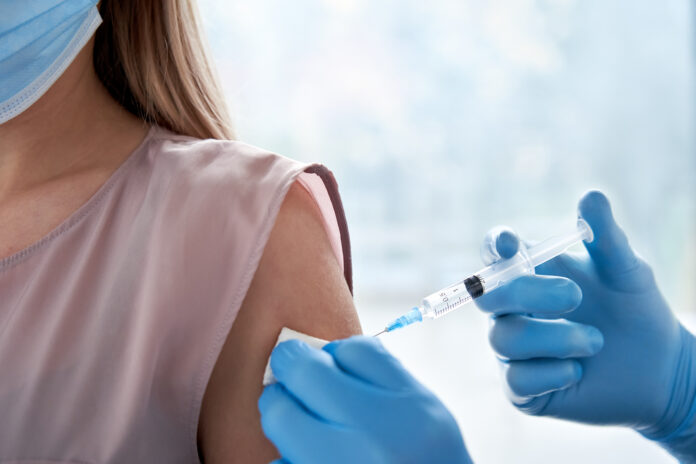Improving vaccine accessibility for people with behavioral health challenges is a key lesson learned from the COVID-19 pandemic. The urgency to vaccinate many people in an effort to combat the COVID-19 pandemic raised concerns for individuals experiencing difficulties managing the process and highlighted the lack of intentional planning for accessibility. Individuals with behavioral health diagnoses1, intellectual and developmental disabilities2, and autism spectrum disorders (ASD)3 are all documented to have significantly higher rates of morbidity and mortality from COVID-19, making vaccination of these populations even more urgent.
Many individuals with fears about vaccination delay or forego routine immunizations, putting them further at risk. According to an article in Monitor on Psychology from the American Psychological Association, the number of individuals with severe needle phobia is “not small” with some studies finding that 7% of adults, 8% of children, 8% of healthcare workers, and 18% of long term care facility employees “reported needle fears as the primary reason for not receiving recommended immunizations.”4 Clinician bias, lack of training, and a history of negative experiences with the healthcare system also contribute to vaccine uptake challenges for people with disabilities.5, 6
Small changes to vaccination routines, clinic environments, and communication strategies can make vaccination more accessible for patients with behavioral health concerns.
Routines and procedures: Consider devices that reduce pain of injections such as Buzzy® and Shotblocker® or try ice packs or topical anesthetics. Patients may use sensory or emotional support objects such as weighted lap pads, stuffed animals, or sensory fidgets. Give vaccines in rooms that provide privacy and eliminate rush to free up clinic space.
Small changes to the clinical environment: A sensory-friendly environment may include adjustments to lighting, seating options, soundscapes, and smells. Changing layout of furniture and tools can decrease fear by eliminating view of needles when patients first enter the vaccination space.
Communication strategies: Replace negative words such as “shot,” “jab,” with more accurate and less emotionally charged language such as “vaccine.” Replace negative pictures and messages of needles and crying children with supportive, positive messages and images. Avoid use of shame or threats of punishment. Educate parents and caregivers on positive communication about vaccines. Find out what patients are thinking and work together to create a plan for positive vaccination experiences. Social stories, a type of storyboard used to communicate with pictures and words, are also helpful for advance planning. Assistive technology, interpreters, and the use of trusted messengers are also recommended.
New accessibility resources are available to guide clinicians. These include the HELP Project of the University of Toronto, which provides clinical practice guidelines and patient resources for reducing vaccination pain. The Autism Society Vaccine Education Initiative provides a wealth of resources including a virtual seminar on “Improving the Vaccination Experience: Accessible Vaccination for Neurodiverse People at Any Age” available on the immunize.org website. The Centers for Disease Control and Prevention also offers a resource page on needle fears and phobia.
Reviewing and restructuring clinical procedures for vaccination to increase accessibility can help all patients access needed care and improve vaccination uptake while respecting human dignity, making patients feel listened to and cared for.
References
1. Li, L., Li, F., Fortunati, F., & Krystal, J. H. (2020). Association of a Prior Psychiatric Diagnosis With Mortality Among Hospitalized Patients With Coronavirus Disease 2019 (COVID-19) Infection. JAMA network open, 3(9), e2023282. https://doi.org/10.1001/jamanetworkopen.2020.23282
2. Landes, S., Finan, J.S., & Turk, M.A. (2022). COVID-19 mortality burden and comorbidity patterns among decedents with and without intellectual and developmental disability in the US. Disability and Health Journal, Volume 15, Issue 4. https://doi.org/10.1016/j.dhjo.2022.101376.
3. Al-Beltagi, M., Saeed, N. K., Bediwy, A. S., Alhawamdeh, R., & Qaraghuli, S. (2022). Effects of COVID-19 on children with autism. World journal of virology, 11(6), 411–425. https://doi.org/10.5501/wjv.v11.i6.411
4. Huff, C. (2021, June 1). How psychologists can help patients with injection fear. Monitor on Psychology, 52(4). https://www.apa.org/monitor/2021/06/injection-fear
5. Lagu, T., Haywood, C., Reimold, K., DeJong, C., Walker Sterling, R., & Iezzoni, L.I. (2022). I am not the doctor for you: Physicians’ attitudes about caring for people with disabilities. Health Affairs 41:10, 1387-1395. https://doi.org/10.1377/hlthaff.2022.00475
6. Ryerson, A. B., et. al. (2021). Disparities in COVID-19 Vaccination Status, Intent, and Perceived Access for Noninstitutionalized Adults, by Disability Status – National Immunization Survey Adult COVID Module, United States, May 30-June 26, 2021. MMWR. Morbidity and mortality weekly report, 70(39), 1365–1371. https://doi.org/10.15585/mmwr.mm7039a2
7. HELP Eliminate Pain in Kids & Adults (helpkidspain.ca)
8. Improving the Vaccination Experience: Accessible Vaccination for Neurodiverse People at Any Age https://www.immunize.org/webinars/cdc4/ 9. Centers for Disease Control and Prevention. (2023, March 8). Needle fears and phobia – find ways to manage. Centers for Disease Control and Prevention. https://www.cdc.gov/childrensmentalhealth/features/needle-fears-and-phobia.html













